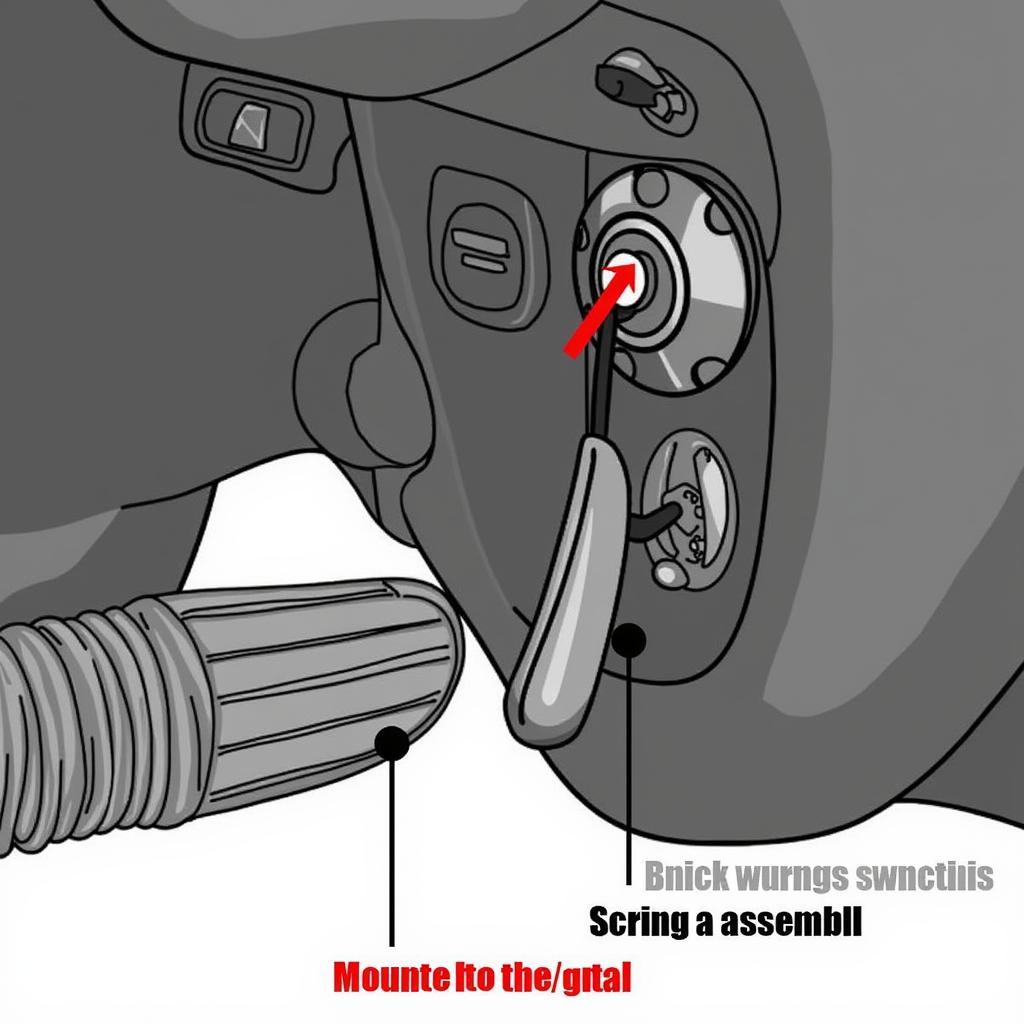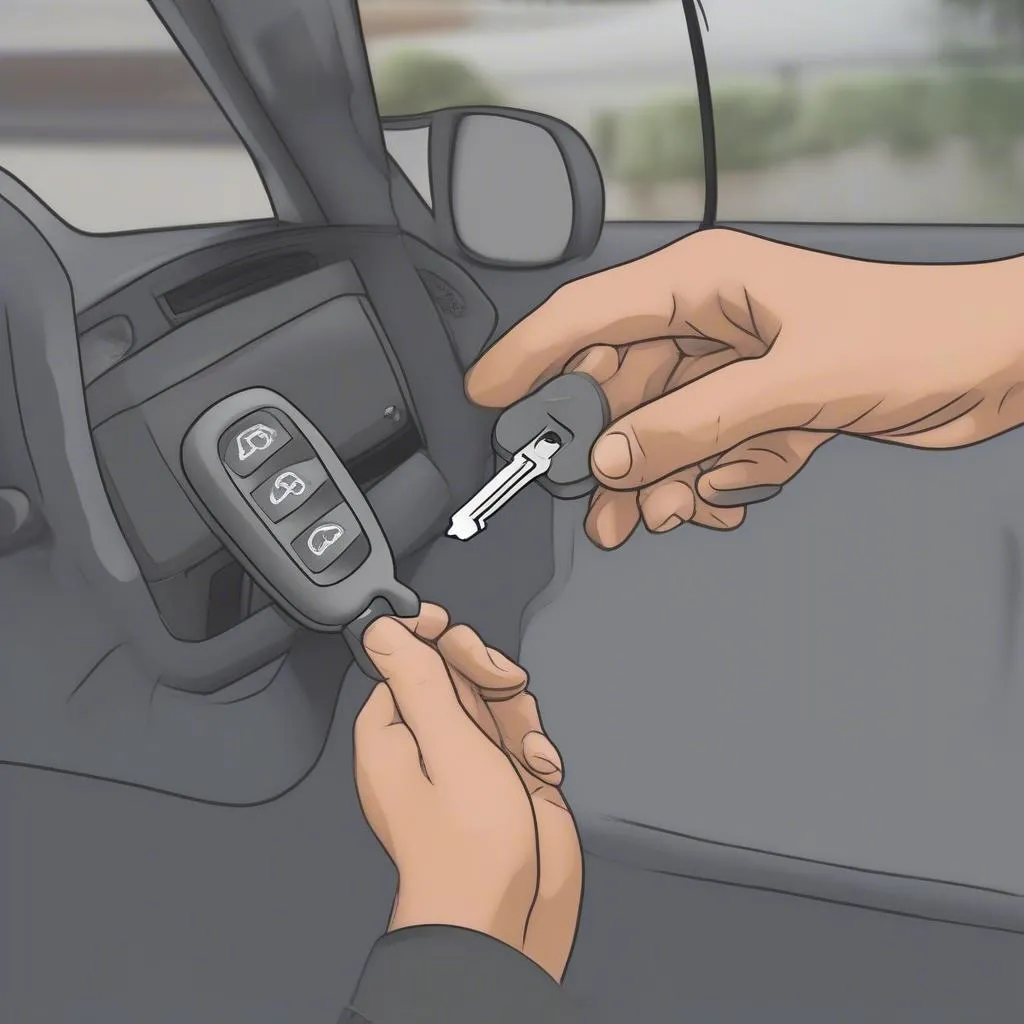The purpose of a brake warning light switch is crucial for vehicle safety. It acts as a critical link between your braking system and the dashboard warning light, alerting you to potential problems. Ignoring this light can lead to dangerous driving conditions and costly repairs down the line. This article delves deep into the functionality, troubleshooting, and importance of the brake warning light switch.
What Does the Brake Warning Light Switch Do?
The brake warning light switch is a small, yet vital component in your vehicle’s braking system. Its primary function is to activate the brake warning light on your dashboard when you engage the brakes. However, its purpose extends beyond simply illuminating a light. It also signals potential issues within the braking system itself. These issues can range from low brake fluid levels to a malfunctioning hydraulic system. The switch acts as an early warning system, prompting you to investigate and address the problem before it escalates into a serious safety hazard. Understanding its purpose empowers you to maintain your vehicle’s safety and performance.
How Does the Brake Warning Light Switch Work?
The switch is typically located near the brake pedal and is activated when the pedal is pressed. This action completes a circuit, sending a signal to illuminate the brake warning light. When the pedal is released, the circuit is broken, and the light turns off. It’s a simple yet elegant mechanism designed to provide immediate feedback on the status of your braking system.
 Brake Warning Light Switch Location on a Car
Brake Warning Light Switch Location on a Car
Common Problems with the Brake Warning Light Switch
Like any mechanical component, the brake warning light switch can malfunction. Common issues include a faulty switch, damaged wiring, or low brake fluid. A stuck switch can cause the warning light to stay on constantly, even when the brakes aren’t engaged. Conversely, a broken switch might prevent the light from illuminating at all, even when there’s a genuine braking problem.
Troubleshooting a Malfunctioning Brake Warning Light Switch
Diagnosing a brake warning light switch issue usually involves checking the brake fluid level first. If the fluid level is low, topping it off might resolve the issue. If the problem persists, further inspection of the switch and its wiring is necessary. This often requires using a multimeter to test the switch’s continuity and voltage.
Why is the Brake Warning Light Staying On?
If your brake warning light remains illuminated even after addressing the brake fluid level, it could indicate several issues: a faulty brake warning light switch, worn brake pads, a problem with the ABS system, or even a malfunctioning parking brake. Ignoring a persistent brake warning light is risky, as it could signal a serious underlying issue with your braking system.
“A consistently illuminated brake warning light is a clear sign that something needs attention,” says automotive diagnostic expert, Michael Stevenson. “Don’t delay in getting it checked out by a qualified technician. It’s always better to err on the side of caution when it comes to brake safety.”
Importance of Regular Brake System Checks
Regular brake system checks are crucial for ensuring optimal performance and safety. These checks should include inspecting the brake warning light switch, brake pads, rotors, calipers, and brake lines. Regular maintenance can help prevent costly repairs and ensure your braking system operates reliably.
The Role of Remote Diagnostics in Modern Brake System Repair
Modern technology has revolutionized automotive diagnostics, with remote programming and software installations becoming increasingly prevalent. These advancements allow technicians to diagnose and resolve issues with components like the brake warning light switch remotely, saving time and money. Remote diagnostics can often identify the root cause of the problem more efficiently, minimizing downtime and ensuring accurate repairs.
Conclusion
The purpose of the brake warning light switch is paramount for road safety. Understanding its function, potential issues, and troubleshooting steps empowers you to maintain a safe and reliable braking system. Don’t ignore the warnings; address them promptly to prevent potential hazards and ensure optimal vehicle performance. Regular maintenance and leveraging modern diagnostic techniques are crucial for proactive brake system management.
“Early detection and prompt action are key to preventing major brake issues,” advises Sarah Chen, lead automotive engineer at AutoTech Solutions. “Don’t underestimate the importance of that little light on your dashboard – it could save you a lot of trouble in the long run.”
FAQ
- What does it mean if my brake warning light flickers? A flickering brake warning light could indicate a loose connection, a faulty switch, or low brake fluid.
- Can I drive with the brake warning light on? While you might be able to drive, it’s highly discouraged. It indicates a potential problem with your braking system, jeopardizing your safety.
- How much does it cost to replace a brake warning light switch? The cost varies depending on the vehicle make and model, but it’s generally an affordable repair.
- How do I reset my brake warning light? Addressing the underlying issue usually resolves the light, but sometimes a reset procedure specific to your vehicle model is required.
- Is the brake warning light the same as the ABS light? No, they are separate warning lights indicating different issues. The ABS light signifies a problem with the Anti-lock Braking System.
- Can low brake fluid cause the brake warning light to come on? Yes, low brake fluid is a common reason for the brake warning light to illuminate.
- How often should I check my brakes? It’s recommended to have your brakes inspected at least once a year or as part of your regular vehicle maintenance schedule.

